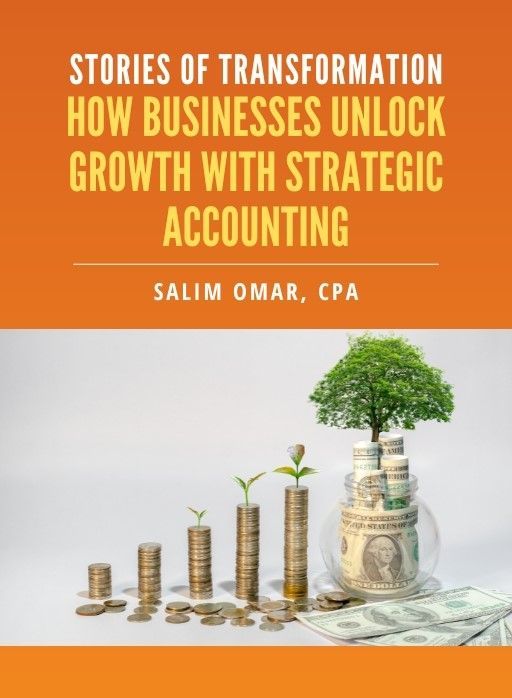Using Your Mid-Year P&L to Build Better Forecasts

The mid-year mark is more than just a checkpoint on the calendar—it's an opportunity to pause, reflect, and pivot. For business owners and operators, one of the most powerful tools in the toolkit at this point is the mid-year profit and loss statement (P&L).
Done right, a mid-year P&L isn’t just a snapshot of where your business has been; it’s a launchpad for where it’s headed. With a little analysis and some strategic thinking, this document can help improve cash flow, guide decision-making, and create accurate forecasts for Q3 and Q4.
Let’s break down how to use your mid-year P&L to sharpen your financial outlook and finish strong.
Step 1: Compare Year-to-Date (YTD) Performance to Projections
Start by looking at your budget or forecast from the beginning of the year. Now match that up with your YTD actuals from the P&L. Are you ahead of your revenue goals? Lagging behind on profit? Spending more than expected in certain areas?
Straight Talk CPAs often sees businesses that are so focused on daily operations that they don’t stop to do this check-in. But this comparison is crucial. If actual revenue is significantly below forecast, you may need to scale back expenses or re-evaluate marketing strategies. If you’re above target, it might be time to double down or invest in growth.
Example: A digital marketing agency expected $750K in revenue by June but only brought in $600K. Their ad spend was also higher than projected. After analyzing their P&L, they adjusted their Q3 strategy—cutting ad spend by 15% and focusing on organic lead gen, which helped stabilize cash flow by Q4.
Step 2: Evaluate Expense Categories Closely
A good forecast isn’t just about predicting revenue—it’s also about managing costs. The P&L breaks out expenses by category, which gives you a chance to see exactly where your money is going.
Are payroll expenses creeping up? Did software subscriptions balloon while no one noticed? Are COGS (cost of goods sold) eating into your margins?
Dig into the categories and look for patterns. Any expense consistently coming in over budget needs attention. Some increases may be justified, but others might point to inefficiencies or overspending.
Pro tip: Break expenses into fixed vs. variable. Fixed costs like rent aren’t easily reduced. But variable ones—like travel, supplies, or freelance contractors—can usually be adjusted.
Step 3: Spot Seasonal Trends
Here’s where your mid-year P&L can get strategic. Patterns may emerge that aren’t obvious month to month but become clear over six months. Maybe Q1 always sees a revenue dip, or Q2 spikes in product returns.
Identifying these trends allows you to build Q3/Q4 forecasts with a more realistic lens. Instead of guessing, you’re preparing based on actual history.
Example: A retail clothing brand noticed that sales tanked in July and August every year, then jumped in November. With that knowledge, they prepped their cash reserves in Q3, ramped up advertising in October, and saw a 25% increase in Q4 profits.
Step 4: Reforecast Based on Real-Time Data
Once you’ve analyzed revenue, expenses, and trends, it's time to update your forecast. And not just for the sake of having new numbers on paper. Reforecasting helps you adjust targets and expectations, giving your team clear direction for the second half of the year.
Build out projections for Q3 and Q4 that reflect:
- Adjusted sales goals based on YTD performance
- Updated cost estimates
- Anticipated seasonal swings
- New initiatives or campaigns
This new forecast becomes your roadmap. It sets realistic expectations for
growth, profitability, and operational decisions.
Step 5: Align Forecasts with Cash Flow
One of the biggest forecasting mistakes businesses make? Ignoring cash flow. A forecast might look great on paper, but if it doesn’t align with cash availability, you’ll hit a wall.
Use your P&L to understand net income trends, but pair it with a cash flow statement to see when money’s actually coming in and going out. Timing matters. If you expect big invoices to land in Q4 but have recurring expenses in Q3, that mismatch can cause problems.
A well-aligned forecast considers when revenue is received, not just when it's earned.
Step 6: Get Department Heads Involved
If you’re running a growing business with multiple departments or revenue streams, don't build forecasts in a vacuum. Bring in your sales manager, marketing director, or operations lead to discuss the numbers together.
Their insights on hiring needs, campaign performance, or inventory issues will add accuracy and context to your projections.
Straight Talk CPAs often facilitates cross-functional forecasting sessions for clients, and the results are consistently more aligned and realistic.
Step 7: Use Forecasts for Smarter Decisions
A polished P&L-based forecast isn’t just for show—it’s a decision-making tool. Here are a few ways to use it:
- Hiring: Can you afford a new employee now or should you wait until Q4?
- Inventory: Should you ramp up production ahead of a seasonal spike?
- Marketing: Does it make sense to increase ad spend now or shift it to later?
- Debt: Should you delay a loan repayment or refinance to free up cash?
When decisions are grounded in updated numbers, businesses stay nimble, confident, and less prone to financial surprises.
Final Thoughts
Your mid-year P&L isn’t just a report. It’s a strategy session waiting to happen. By analyzing what’s happened so far and projecting what’s next, you’re giving your business a real shot at finishing the year stronger than it started.
With smarter forecasting, cleaner cash flow, and better-informed decisions, the next six months can be your most profitable yet.
Free eBook:
Stories of Transformation


Salim is a straight-talking CPA with 30+ years of entrepreneurial and accounting experience. His professional background includes experience as a former Chief Financial Officer and, for the last twenty-five years, as a serial 7-Figure entrepreneur.




